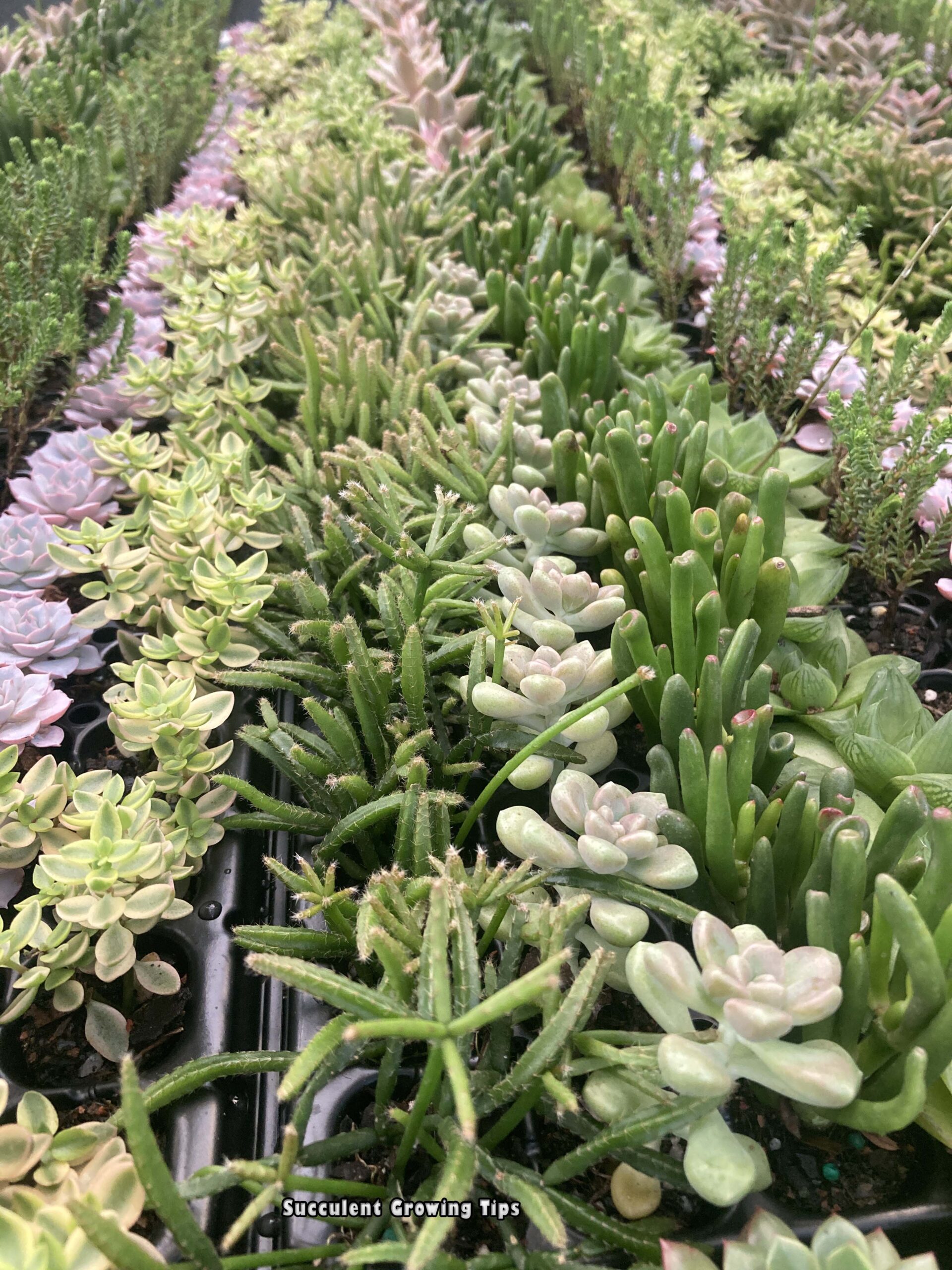Although the plant nursery I operate is very small, we manage to produce close to half million plants every year. This is nothing in comparison to big wholesale nurseries producing the same amount in a month, but still, it is quite a lot.
But how exactly do I manage to grow so many succulents? Where are they grown? How are they propagated? In this article I will show you a bit behind the scenes.
How does a succulent nursery grow plants?
The thing about succulents is that most are incredibly easy plants to grow and propagate. As far as plants go, they only need a few basic things- high quality potting mix, shelter from extreme UV in summer/frost in winter, water during dry spells and pest management.
Apart from succulents I also grow indoor foliage plants and a few Australian native plants. These are much more high maintenance and need quite a lot of TLC to look tip top.
While huge wholesale nurseries mostly grow their plants in massive greenhouses where climate can be controlled to create a perfect environment for succulents, I have opted for a different approach and grow most of my succulents outdoors. It is my belief that succulents will end up being more hardy, accepting of harsh conditions, more compact & colourful.
Having said that, I do have 4 greenhouses where the more rare and touchy succulents live (think Echeveria Romeo, Cotyledon Tomentosa Variegata etc.) as these can rot easily when it rains frequently.
I also use these greenhouses to raise tiny plants when it starts getting cool.
In summer temperatures here in Australia can easily tip 40C/104F and the UV is extremely strong (more so in this part of the world due to our proximity to the sun). To prevent burns on the succulents, 30% shade-cloth is pulled overhead. This protects my plants from hail and stray debris that can blow in.
When at the markets, where I sell to the public twice a month, many people comment on how beautiful and big the succulents are. This is almost exclusively down to the potting mix. The right succulent potting mix can make a massive difference to how succulents look and grow. Our potting mix is bought by the ton and is not sold at any shop. It is specially tailored to growing succulents and contains all the right nutrients a plant will need if grown in pots.
How does a succulent nursery get and propagate its plants?
These days by far the best and most common method is tissue culture. Chances are that a lot of succulents (and other plants) you own have been grown from tissue cultures. This method of propagation is done in sterile conditions in a lab and hundreds of tiny cultures can be produced in a couple of months from just one plant with the help of growth hormones.
The great thing about getting tissue cultures is that the plants come free of disease and are an exact clone of the mother plant, though mutations do occur. Nearly half of our plants start out as tissue cultures and are grown on until they have good root balls and are hardened off outdoors. Then they are put up for sale.
The next method nurseries use is propagation from cuttings. To effectively propagate plants like this, quite a few mature plants are needed so decent numbers can be produced. It is no good only having 10 or 20 cuttings of one plant. 200 upwards is more the right number. It can take a couple of years to build up a good stock of certain plant varieties and so this is only viable with fairly prolific plants that grow fast/ produce enough offsets.
Many succulents also have the ability to propagate from leaves and although this method of propagation can be quite slow and is not possible with all succulents, depending on the particular species, it can be well worth it as substantial numbers can be gained just from 5 or so mature mother plants.
And the last method I use, but only very rarely is propagating succulents from seed. It is incredibly slow and not always reliable, but plants such as Lithops, Fenestraria, the rotund Euphorbia and cacti do grow quite well from seed and despite the wait it can be worth it, especially with rare varieties.
What next?
Once a plant is big enough, I offer it up for sale on our website fernfarmplants.com.au or take it to the local markets. Some of our plants also go to local florists and private clients as favours or bonbonnieres.
The plants that are bought through the website are then shipped in a box to their new homes.
